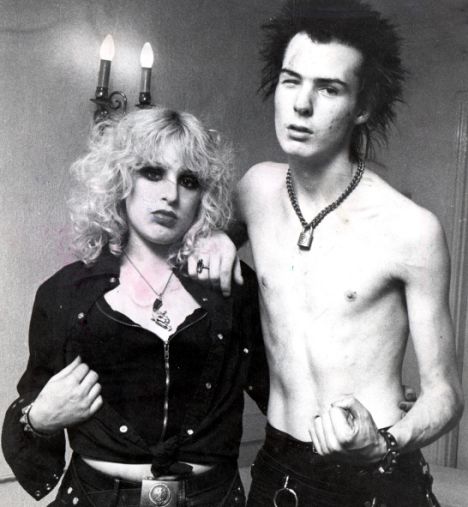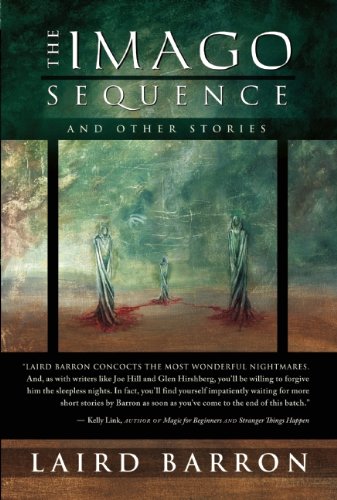 Tim and Eric’s comedy is about weapon-grade awkwardness. They’re the kings of off-kilter timing, inexplicable malapropisms, garishly slapdash special effects, and reaction shots that last two seconds too long. Their style resembles banal daytime TV fed through some sort of cosmic dislocator so that everything is 10-15% off.
Tim and Eric’s comedy is about weapon-grade awkwardness. They’re the kings of off-kilter timing, inexplicable malapropisms, garishly slapdash special effects, and reaction shots that last two seconds too long. Their style resembles banal daytime TV fed through some sort of cosmic dislocator so that everything is 10-15% off.
Although in this case, it’s more like a banal direct to video movie. The premise: the Schlaaang corporation gives Tim and Eric a billion dollars to make a movie, which they squander on diamonds, helicopter rides, and a $500,000 a week spiritual guru. When they deliver a ridiculous 3 minute film starring a Johnny Depp impersonator, an enraged Tommy Schlaaang orders them to pay back the billion dollars. Destitute, they end up hiding at a derelict mall while ducking Schlaaang’s thugs.
Tim and Eric adjust to their new home, which is filled with such oddities as a used toilet paper store, a sword salesman who earns money by not selling swords, and a man-eating wolf that stalks the food court. They make friends, and enemies, and learn an important lesson: sometimes you gotta bring knives to a gunfight.
Some scenes perfectly nail the uncomfortable Tim and Eric vibe (there’s an almost impossible to watch scene where Eric starts to loudly masturbate off-camera, and it doesn’t let us go until he reaches his climax). Other scenes drag like hell, and have little energy. There’s a scene where Tim and Eric are trying to buy the mall from a neurotic Will Ferrell, and he forces them to watch Top Gun not once but twice. It probably sounded hilarious on paper. On screen, you’re thinking “okay…feel free to go somewhere with this any time, boys.”
This movie exposes the limitations of the Tim and Eric format, which is that they have trouble sustaining interest in their schtick for long periods of time. They were at their best in Awesome Show, Great Job, where they bombarded you with sketch after sketch. While you were still recovering from a left hook, in swings the right. But the artistic strictures of film means they have to keep scenes going, and going, and going…and the cider goes flat. They rely on the unexpected, and too much of the unexpected means your tastes adjust downward like a pupil under a bright light. Their ironic kitsch starts to seem like genuine kitsch. Their awkward pauses and affectations seem like random stupidity.
It’s fun to be in Tim and Eric’s world, but honestly you don’t want to be there for long. Billion Dollar Movie is like spending 94 minutes on a roller coaster. Fun at first, but after a certain point you just want to get off.
No Comments »
 Watching an old interview with the Sex Pistols can be funny. We’ll get a spiel about how crazy they are, how they embody burn-the-bridges musical terrorism…then the interview starts, and they seem disappointingly normal. Nothing ages as poorly as rebellion. They were ahead of their time, but not too far ahead. Both Johnny Rotten and Sid Vicious would look dull at a 21st century Hot Topic. Time has murdered their shtick.
Watching an old interview with the Sex Pistols can be funny. We’ll get a spiel about how crazy they are, how they embody burn-the-bridges musical terrorism…then the interview starts, and they seem disappointingly normal. Nothing ages as poorly as rebellion. They were ahead of their time, but not too far ahead. Both Johnny Rotten and Sid Vicious would look dull at a 21st century Hot Topic. Time has murdered their shtick.
If anything looks bizarre to a modern viewer, it’s the pomaded, coiffed, tweed-wearing creatures in the interviewer’s chair.
Scott Alexander once said “Virtue is appropriated by people wanting to signal smug superiority. Others start by condemning the signaling, but move on to condemn virtue.” Punk rock was like that. It started out as a reaction against the pretensions of popular music at the time (17 minute progressive rock opuses about walruses mating, and all that), but soon became an all-out attack against music itself.
Punk rock tore down every idea about music, especially that it has to be good. Having standards became an indicator of poseurdom. Can you play your instrument correctly? Suspicious. Do you sing on key? Doubly suspicious. Do you have lots of fans? That’s the worst of all. Might as well write “fake punk” and “sellout” on your guitar case.
Which is funny, considering that the authenticity of the Sex Pistols is far from unimpeachable. Yes, their image was calculated, and they were stage-managed. To hear Malcolm McLaren tell it, they were little more than a boy band formed to promote his clothing line. But maybe even trying to be authentic is inauthentic. Maybe the realest band is actually the fakest band, and vice versa, and thus the Ouroborus eats its own tail.
“Ever get the feeling you’ve been cheated?” Johnny Rotten sneered at the final Sex Pistols show, in San Francisco. The band was coming apart at the seams. They were wrapping up a tour where McLaren had deliberately booked them for venues in the deep south, to maximize the controversy (and if one of them got blasted to death by a drunk redneck!). Sid Vicious was already picking up speed into a terminal death spiral. He was a few days away from a valium and methadone-induced coma. If this is real music, maybe fake is better.
Even if the Pistols were “real”, most of their fans weren’t. One gets the feeling that the Pistols were growing disillusioned by the social movement they were meant to be heading up. The Winterland promoter estimated that only about 10-15% of the audience were genuine punks. The rest of them were just normies who’d come to see the freaks. For the average person in that crowd, it was just a kind of zoo where you can throw food at the animals.
Maybe it’s not a coincidence that after the Sex Pistols ended, Johnny Rotten terminated what seemed like a prosperous career as Iggy Pop v2.0, and started releasing utterly unmusical albums as Public Image Ltd. Maybe he wanted to plant his flag firmly on the side of rebellion, and the Sex Pistols weren’t breaking enough soil for his taste. People will be listening to the Pistols record for far longer than anything PIL will ever release, but that’s a small price to pay for the most valuable currency of punk rock: authenticity.
Johnny Rotten once said “only the fakes survive”. Which he himself did, in a way. But not very well.
No Comments »
 This short story collection demonstrates that Laird Barron is clearly a master of his art. What art he’s a master of, I’m not sure.
This short story collection demonstrates that Laird Barron is clearly a master of his art. What art he’s a master of, I’m not sure.
Some stories are like “Shiva, Open Your Eye” – short, compact blasts of ice-tipped imagery and efficient prose. Other stories, like “Procession of the Black Sloth” are longer and more languorous, and tend to develop more like vines, growing in indecisive directions and sometimes looping back on themselves. Only at the end does it become clear…sometimes.
You could name-check all day if you’re looking for comparisons. Lead-off story “Old Virginia” seems to have some King/Koontz DNA: a black-hat government spook and a research team are out in the wilds during the height of the Cold War, in possession of what they hope is a powerful psychic weapon in the body of an old woman, when an unknown person begins sabotaging the program. I liked this one, the way it spins together several ideas – the CIA’s MKULTRA program, the legendary disappearance of the Roanoke colonists, even some subtle Weird Tales pastiches – without the story collapsing into a mess.
“Procession of the Black Sloth” reminded me a lot of Dan Simmons’ “The Song of Kali”. Especially the way the specific horrific events of the story sort of merge with the nonspecific horror of being in a far off, unfamiliar place. In this case, the scares come 50% from the setting itself. Right on the heels of that is “Bulldozer”, which seems a bit like a Beat generation horror story – specifically the southern-influenced kind of Beat of Jack Kerouac and William S Burroughs.
The volume’s powerful grace note is “The Imago Sequence”, a kind of multiply-layered tale (like House of Leaves, but less obvious in what it’s trying to do) involving a series of disturbing photographs. A great main character in this one, as well as a strong and compelling atmosphere. The story’s paradoxically languid but paranoid – like a drugged man groping in the dark, before the thing in the dark finds him first.
Not everything here is pulled off perfectly – “Old Virginia” is queered at the end by some goofy Bond-villain-esque monologues, while “Shiva, Open Your Eye” probably could have benefited from some more subtlety. But overall, the Imago Sequence is an impressive, diverse, and memorable set of stories. There’s lots of stuff here for you, no matter who you are.
My digital copy of this somehow has an error that credits it to “Laird Barron” and also “Laird Barron”. Maybe that works, in a way. Maybe he’s multiple people. But no matter which Laird Barron is behind the word processor, The Imago Sequence carries a high recommendation.
No Comments »
 Tim and Eric’s comedy is about weapon-grade awkwardness. They’re the kings of off-kilter timing, inexplicable malapropisms, garishly slapdash special effects, and reaction shots that last two seconds too long. Their style resembles banal daytime TV fed through some sort of cosmic dislocator so that everything is 10-15% off.
Tim and Eric’s comedy is about weapon-grade awkwardness. They’re the kings of off-kilter timing, inexplicable malapropisms, garishly slapdash special effects, and reaction shots that last two seconds too long. Their style resembles banal daytime TV fed through some sort of cosmic dislocator so that everything is 10-15% off. 

